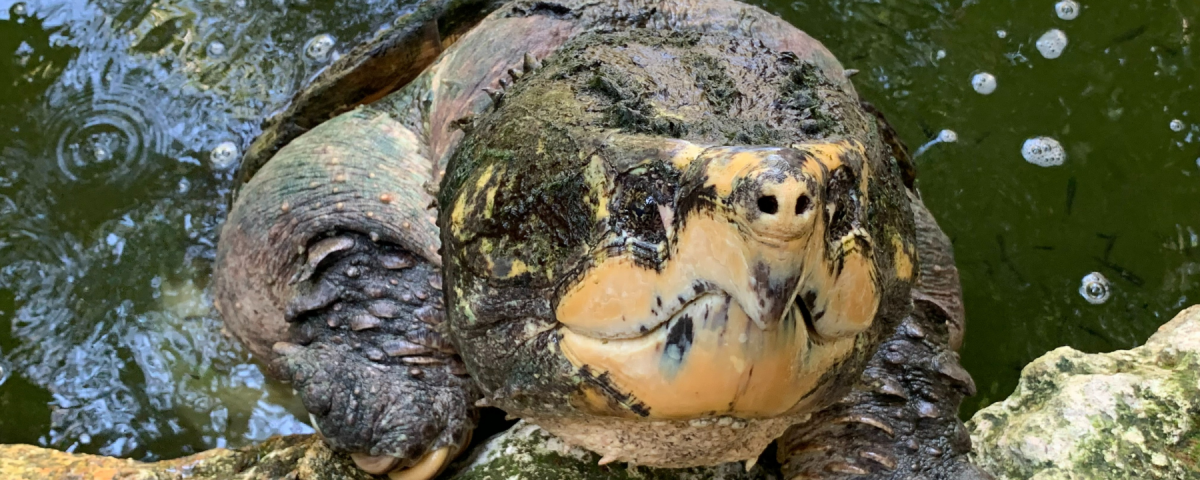Dinosaur Descendants: Tonca’s Reptile Relatives

How Museums Are Vital to the Education of Children
August 24, 2022
The Voyage to the Deep Experience
September 22, 2022Authored by: Dominique Jenkins | Communications Intern
Turtles come in all shapes and sizes and are often seen as fairly calm creatures. However, these shelled animals are actually distant relatives of some of the most fearsome and ferocious beasts to ever roam the Earth—dinosaurs. Scientists estimate that dinosaurs and turtles evolved from a common ancestor over 260 million years ago and lived side-by-side for millions of years. While they may appear vastly different on the outside, dinosaurs and turtles share some characteristics. Over time, turtles have been able to evolve and adapt to their environments, and live long lives.
One of the most famous animals at MOSH is our alligator snapping turtle, Tonca, who celebrated his 56th birthday on July 9th. Not only is Tonca the largest turtle at MOSH, but alligator snapping turtles are the largest freshwater turtles in the U.S. In 1999, an alligator snapping turtle set a new record, weighing in at 249 pounds.
Alligator snapping turtles are part of the Archelosauria group, which includes dinosaurs and their relatives such as birds, alligators, and other turtles. In fact, alligator snapping turtles are known as “the dinosaurs of the turtle world” due to the features they share with their prehistoric ancestors. These features include their spiky shells and scaly skin resembling the Ankylosaurus, and their beaks like the Regaliceratops. While members of the Archelosauria group are found all over the world, alligator snapping turtles live exclusively in North America and are most commonly found in the southeastern United States. There are three species of alligator snapping turtle: the Marcochelys temminckii, the Marcochelys apalacicolae native to western Florida, and the Marcochelys suwanniensis found in the Suwanee River regions of Florida and Georgia. Tonca is part of the Marcochelys apalacicolae species.
Similar to their dinosaur predecessors, alligator snapping turtles are considered apex predators. Apex predators are at the top of their food chains and have no natural predators. In the case of alligator snapping turtles, only after their hatchling phase are they considered true apex predators. Alligator snapping turtles are mostly carnivorous, like several species of dinosaurs, such as the Nanuqsaurus and the Velociraptor. Similar to the T. Rex, alligator snapping turtles have an extremely strong bite, which helps them feast on fish and, sometimes, smaller turtles.
Though alligator snapping turtles may seem to have it all together, unfortunately, they continue to suffer from low population numbers. In 2014, it was believed that only 900 Marcochelys suwanniensis remained in the wild. The main threat to alligator snapping turtles today is human activity. Though they are not officially classified as endangered species, several states have implemented laws to protect them from being collected from the wild and to prevent their extinction. Conserving alligator snapping turtles is extremely important in order to keep their ecosystems stable and thriving. Alligator snapping turtles are living links to a world untouched by humans—the world of dinosaurs.


